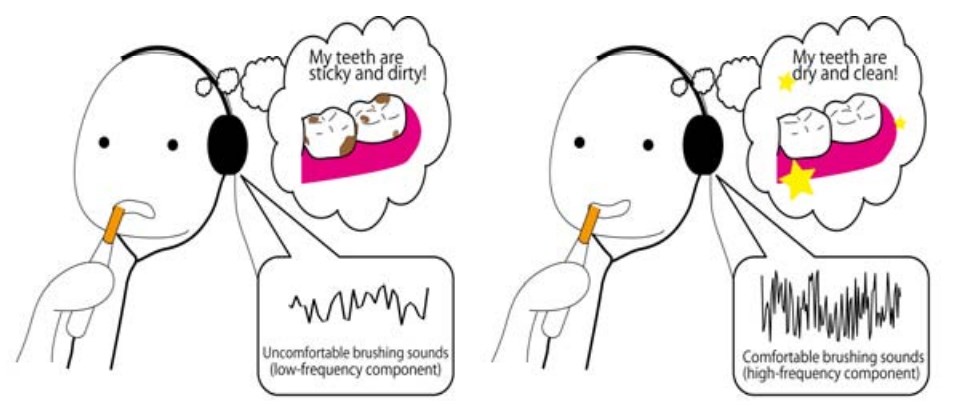Those of us who are not dentally deprived endeavor to clean our teeth at least twice a day and to floss regularly. Looking after one’s teeth and brushing effectively are instilled in us from childhood along with the idea of eating plenty of fruit and vegetables and avoiding too many sweet things, especially between meals. It seems that brushing habits, as with many other habits, become ingrained and motor memory takes over in this twice-daily ritual. We undertake our dental hygiene on auto-pilot, whether or not our regime is as effective as our dental hygienist would like.
Now, Japanese researchers have discovered that how effectively we clean our teeth and how satisfied we are with the brushing job we do depends a lot on the sound of the bristles scrubbing against the enamel. In trials with volunteer teeth cleaners, the team used a tiny microphone in the toothbrush to “sample” the sound being made in the mouth during brushing and to modulate it in some way and then feed that sound back to the volunteer.
Writing in the International Journal of Arts and Technology, Taku Hachisu and Hiroyuki Kajimoto of The University of Electro-Communications, in Chofu, Japan explain how modulating the brush sound affects brushing efficacy and satisfaction. The team found that if they manipulated the pitch, or frequency and loudness, of the brushing sound they could alter the volunteers’ perception of comfort and accomplishment. They also showed that if they gradually increased the frequency as teeth cleaning progressed, the volunteers felt like the process was more comfortable and that their teeth were cleaner at the end of the process.

“Tooth brushing provides a ‘negative reward’ for users as they brush their teeth to avoid developing caries,” the team explains. Many people find the task boring. “Subsequently, users do not consider the impact of omitting the action until suffering from caries or other dental diseases,” the team adds. Their results show that it is possible to motivate users by interactively manipulating the frequency of brushing sounds, so that the task becomes more satisfying. Importantly, the system can tell, through a built-in force sensor, whether a person is brushing too hard, which can damage the gum line, and so give them aural feedback to encourage them to clean their teeth more gently.

The prototype system requires the teeth cleaner to wear headphones, which is impractical in real life. However, there are bone conduction speaker systems that might be incorporated into the smart toothbrush so that the amplified feedback loop is created in one’s mouth. The team will next recruit volunteers to test the system in their comfort of their own bathrooms.
Hachisu, T. and Kajimoto, H. (2015) ‘Modulating tooth brushing sounds to affect user impressions’, Int. J. Arts and Technology, Vol. 8, No. 4, pp.307–324.